MusicRadar Verdict
Easily glides from metal to jazz. Fusion with attitude? Maybe…
Pros
- +
Retro-influenced design. Good build. Highgain/classic sounds. Wide Range humbucker.
Cons
- -
No coil-splits or tone control. Humbucker squeals at high gain.
MusicRadar's got your back
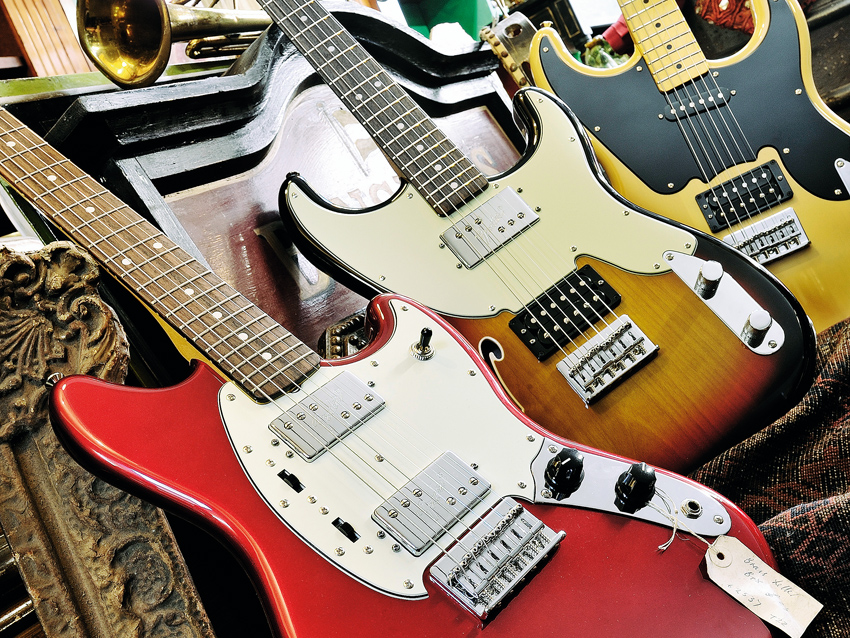
Fender Pawn Shop Series
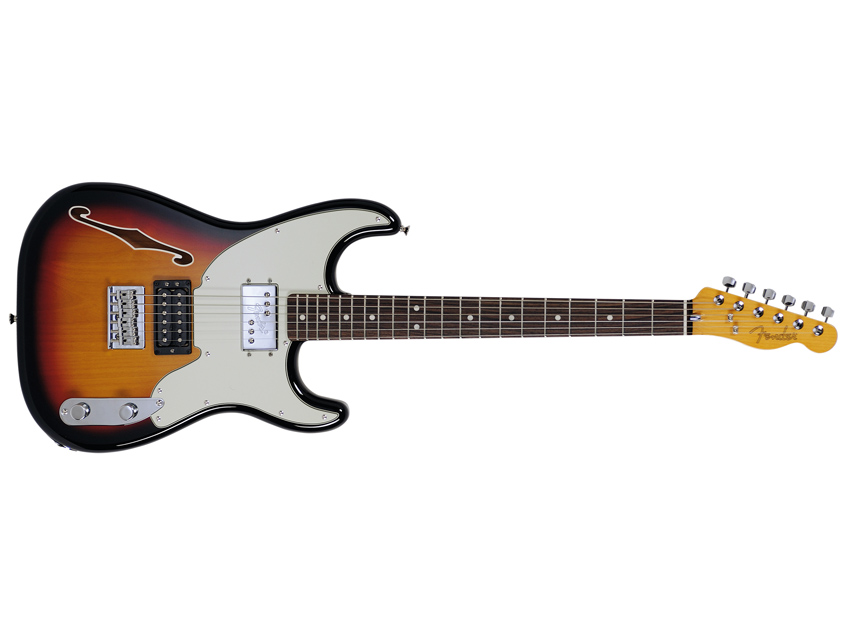
Fender '72
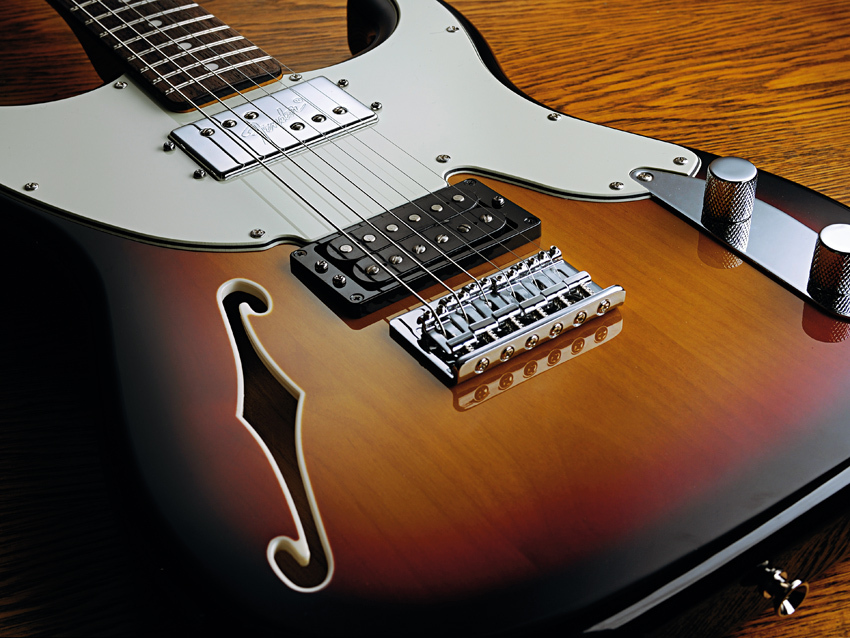
Fender '72
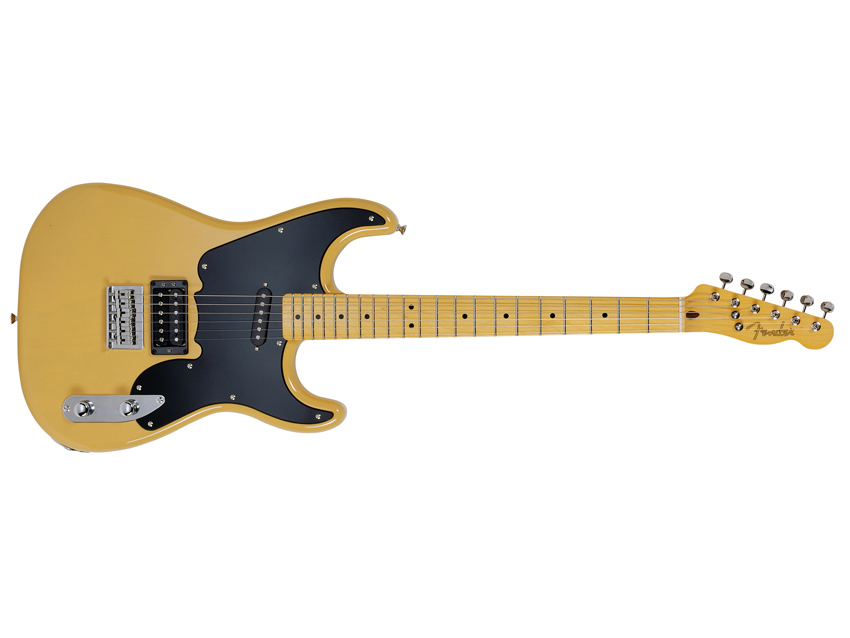
Fender '51
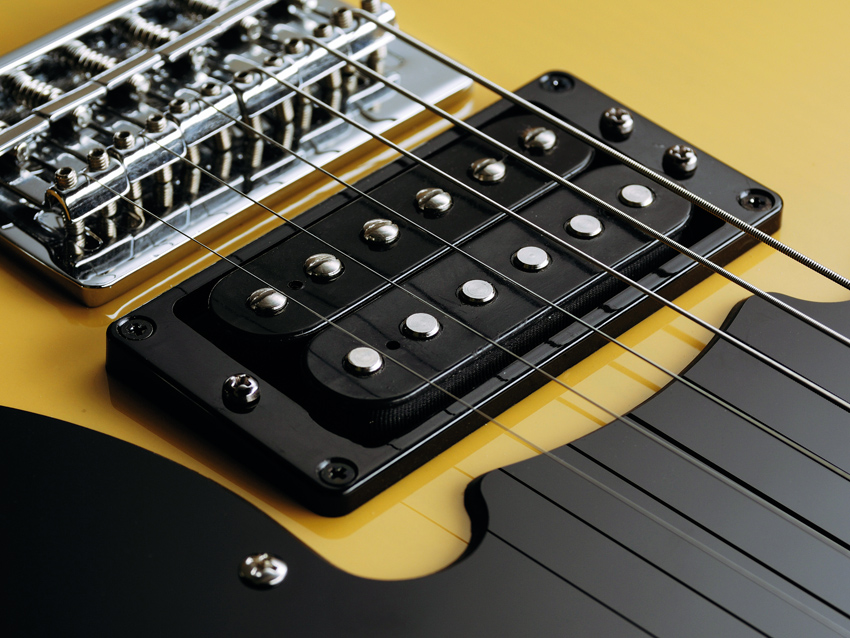
Fender '51
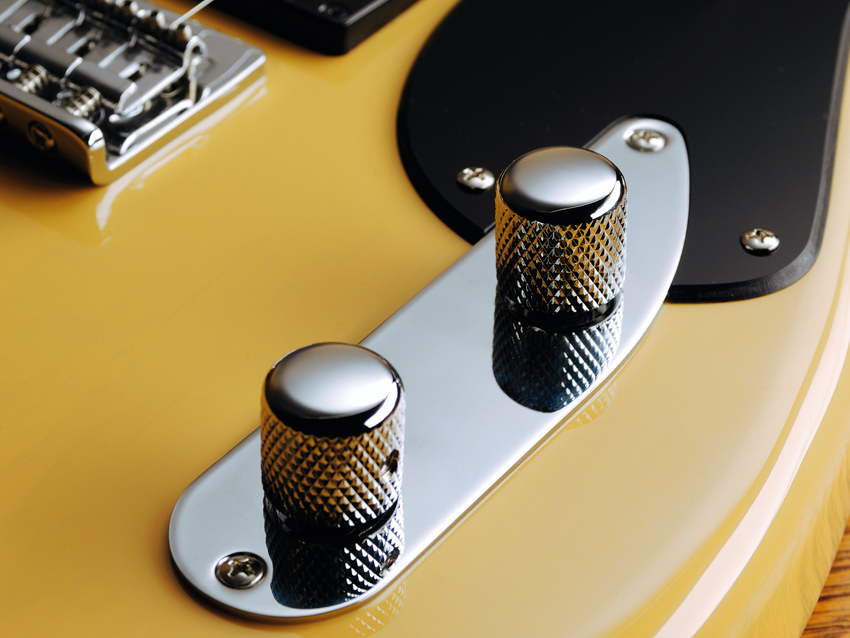
Fender '51
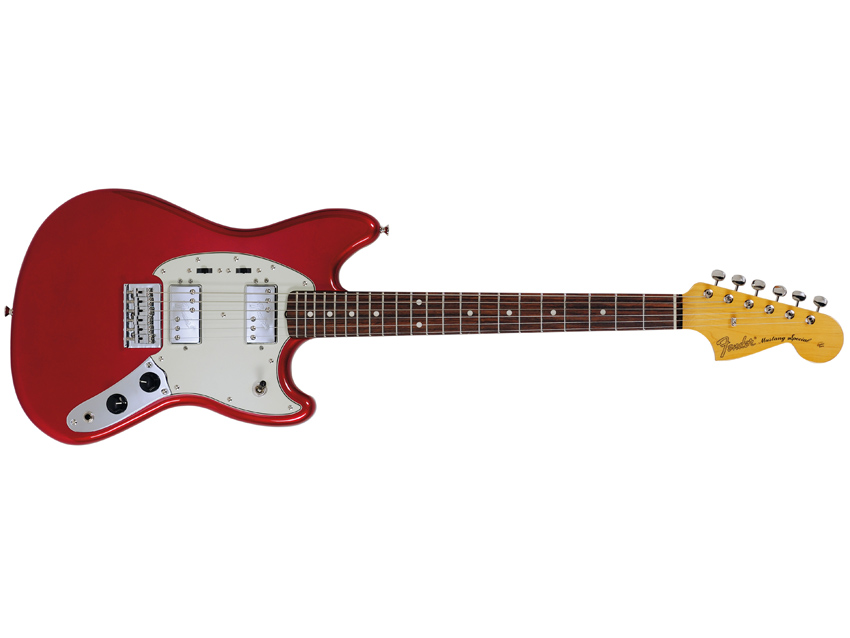
Fender Mustang Special
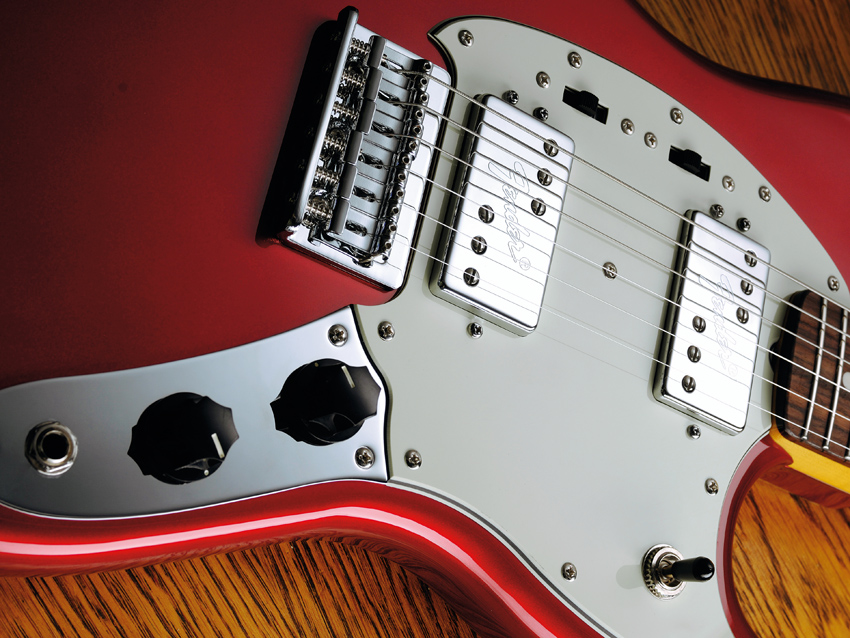
Fender Mustang Special
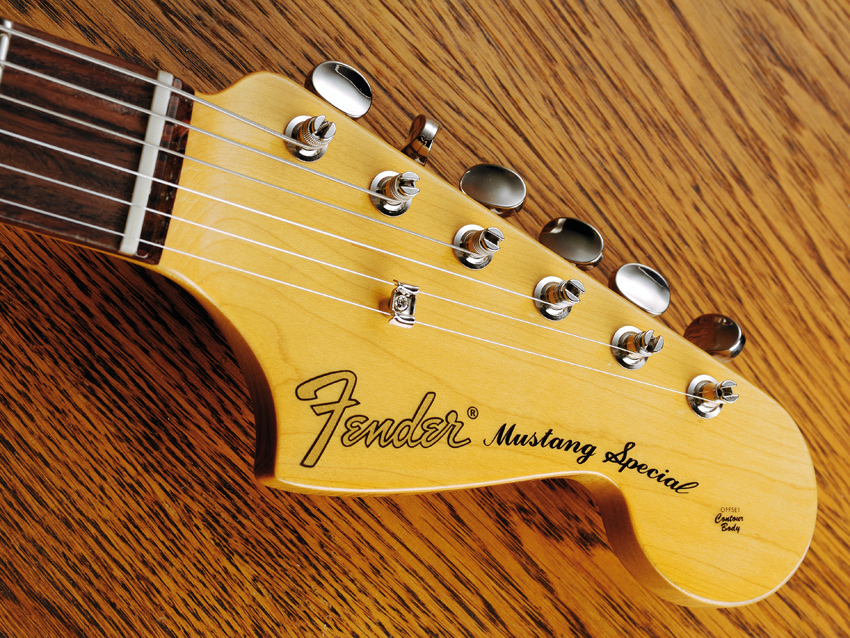
Fender Mustang Special
As the archetypal 'heritage' company, Fender has a long history that, as we know, is dominated by two guitars: the Stratocaster and the Telecaster.
Other models such as the Jazzmaster and Jaguar have become more popular in recent years, but outside these famous four designs (and numerous variations thereof), there's little - a lone Mustang, for example - to reflect Fender's many other electric creations. Yet with the new Pawn Shop series, that looks set to change.
We wanted to use the innovative (if also eccentric) time of the mid-sixties as a new place to mess around with history, have a little more freedom from vintage constraints and open up a platform for some new designs - things that are different, yet distinctly Fender," explains Justin Norvell, product director for Fender Guitars and Basses.
"The CBS-era [the owners of Fender between 1965 to 1984] is less of a dark period at least as far as the more outsider design stuff goes - from Jonny Greenwood playing his Starcaster to Alex Turner favouring the Bronco. It's also a place for us to experiment with more humbucking designs.
"The goal is to have lots of concepts and designs here and throw a lot of ideas against the wall - some will catch on and may become mainstream, some will be curios in the history books years from now."
All three Pawn Shops are made in Japan - again a rarity these days for Fender, with only the Geddy Lee Jazz Bass, Marcus Miller Jazz Bass, Jaguar Bass, Jazzmaster, '62 Tele Custom and Jaguar HH sharing this country of origin. So, three 'new' designs then. Or are they?
Fender '51
New to the Fender line, the Fender '51 will be very familiar to those who enjoyed the sub-£150 Squier '51, which was first released back in 2004 and discontinued in 2006.
Want all the hottest music and gear news, reviews, deals, features and more, direct to your inbox? Sign up here.
"I designed that when I was running Squier," confirms Norvell. "It found a cult fanbase of players who adored it and all I used to hear was, 'you have to make a Fender version of this guitar!' But we wanted some time to pass before 'taking it upstream' as it were."
The Squier was always dubiously titled - its visual aesthetic based on the original 1951 Precision Bass, while the Strat-like contoured body P-Bass didn't appear until 1954. But, who cares?
"Both the '51 and '72 feel very familiar seated or strapped on. The Mustang feels a little small and insubstantial."
The Fender '51 starts with a standard 45mm-thick alder Strat-shaped body, cleanly finished in a caramel-hued blonde that allows a little of the wood grain to be seen. The Pawn Shop guitars are entirely finished in polyester, the necks glossed and lightly amber-tinted.
Weights of all three guitars are on the light side - especially in the case of the Mustang. Contouring is a little thicker than fifties vintage in the rib-cage contour and generous edge radiusing.
In keeping with the original Precision Bass vibe we get a Tele-headstocked neck. It's a one-piece neck/fingerboard with a profile that's classed as a 'C' shape and, with a depth of 21mm at the first and 22mm at the 12th, it has quite a modern feel - it's not as large in the higher fret positions as many clubbier, vintage-style Fenders are.
The fingerboard radius is modern Fender too, the frets (approximately 2.65mm wide by 0.9mm high) feel wide and low, especially on this glossed face. There's virtually no finish build-up around the frets, each one is perfectly polished and the fingerboard edges are lightly rounded.
The fourscrew neckplate is rectangular and plain, though a little more neck pitch would help as the screws from the vintage-style pressed saddles protrude rather uncomfortably. With Fender's modern neck-tilt design it's an easy fix: with this old-style set-up it's more of a faff - and an unnecessary one at that, especially given that there's no concern for vintage style or accuracy on this guitar.
Function is also called into question regarding the electronics. Just a master volume and three-way rotary switch - hardly commonplace in the Fender design Bible - control that lone, offset Texas Special at neck and the open-coiled Enforcer humbucker (ceramic-powered with a quoted DC resistance of 24k ohms) at the bridge, a design that first appeared on the Fender John 5 Tele.
"It wasn't designed for him as such," says Norvell, "but we designed a more aggressive humbucker right as we were also working on his model."
We do get a pull/push switch on the volume control to voice the bridge-facing single-coil of the bucker, but that's it. Both of these controls sit on a slightly downsized version of the original P-Bass control plate - there's no face-mounted output jack dish, instead that's placed on the body's side on a eye-shaped metal plate.
Mustang Special
The Mustang's student status, short scale and diminutive body - not to mention quirky vibrato - have always affected its popularity compared to the classic Fender four. But this Special is substantially upgraded.
First off we get a 'modified' Mustang body: "it's subtly offset in the style of the Jaguar and Jazzmaster," says Norvell. "It looks like it always should have been that way! Plus it's strung through the body," using the same hardtail Strat bridge as the '51.
Then, replacing the original's single-coils, are two Enforcer Wide Range humbuckers with their distinct offset polepieces poking through the chrome-plated, Fender logo'd covers.
How do these differ from the Enforcer humbucker on the '51? "It's just the cover that's on it," says Norvell, "which does of course affect the tone. It's cool though, because now we have pickups with that seventies Wide Range look, but in a stock size and with modern sound - the regular Wide Range pickups are huge!"
Indeed, check out the Wide Range 'bucker on the '72, which we'll get to in a minute, and you can see Norvell's point.
Unlike the relative paucity of control options on the '51 and '72, here we're spoilt for choice with a three-way toggle pickup selector on the treble horn, master volume and tone (and output jack) on the chrome-plated metal control plate then two three-position 'coil selector' switches - one for each humbucker - on the mint green three-ply scratchplate, which also suspends the pickups and holds that three-way toggle.
"The three-way sliders represent the coils of each humbucker, so to the left is the front coil, in the middle is both coils, and to the right is the back coil. Just like it's laid out on the guitar," explains Norvell. "Couple that with the three-way toggle switch and you have 18 sounds!"
Under the always-smart Candy Apple red metallic finish is a reduced thickness (38mm) alder body, contoured like a Strat and again with generous edge radiusing. With its reduced size and thickness it's little surprise that it's the lightest of our trio.
The neck is slightly deeper (20.4mm at the first fret, 23mm at 12th) and feels a little more rounded and clubby in the hand. Again we have the modern fingerboard radius and seemingly the same gauge frets tidily fitted onto the slab, rosewood-only 'board. Just like the '51, we have the same neck fixing and truss rod adjuster placement.
Fender '72
Although it'd be accurate to call this a semi-hollow version of the '51, again a host of subtle spec changes make it quite different.
"We've been playing around with the idea of a thinline Strat for some time - the original incarnation had a flat top and was bound, but we felt it lost its Strat nature a bit. It's quite a challenge to get the f-hole on there with the edge radius and contour," observes Norvell.
The resulting cavity is only just larger than the neatly bound f-hole and some 25mm deep from the guitar's top - so it's clearly more for show than sound, although overall it's slightly lighter than the '51.
The Tele neck has a quoted different 'U' profile - 21.4mm deep at the first fret, 22.7mm at the 12th . It really doesn't seem that different to the '51, slightly fuller but not the expected fuller-shouldered shape of its 'U' designation.
Here though we get a bullet-style adjustor, which at least makes truss rod adjustment easier, plus a three-screw neck plate - with neck tilt adjustment - that feels just as rigid as the '51's four-screw attachment. Unlike the '51's neck-pitch adjustment, again necessary here, this is a doddle.
Another spec anomaly is the quoted Dunlop 6105 fret wire - the frets look, feel and measure the same on all three guitars - wider and lower than Dunlop's spec. But like the Mustang, it's a rosewood-only 'board, again a thin slab, and is nicely done.
All three guitars have slotpost tuners - the '51 and Mustang use unlogo'd vintage Klusons, while the '72 goes for period spec-style with 'F'-logo'd cases and flattened sides to the buttons.
Again we have a different electronics layout, with an open-coiled Enforcer at bridge, but with a larger-than-the-Mustang's Wide Range humbucker at neck. The E to E pole spacing is slightly wider on this larger pickup meaning that the outer strings nearly miss the poles altogether.
Along with its four wider-spaced fixing/adjustment screws this pickup is larger - some 79.5mm by 44.6 compared to the Mustang's 69.5mm by 37.9mm size with its more conventional single fixing/adjustment screw on the treble side and closer spaced dual fixing/adjustment screws on the bass-side.
In short the Mustang's Enforcer Wide Range would fit perfectly into the bridge pickup's humbucker mounting ring, whereas the original size of the '72's Wide Range needs to be suspended from a scratchplate.
The controls differ too: the '72 sports just a master volume and pickup blend control - there are no coil-splits here.
Sounds
Let's start with a few general observations. The Mustang's controls are initially most logical, although placing the three-way toggle on that treble horn will frustrate the furious strummers among us; conversely more subtle players will love the easy access the placement brings.
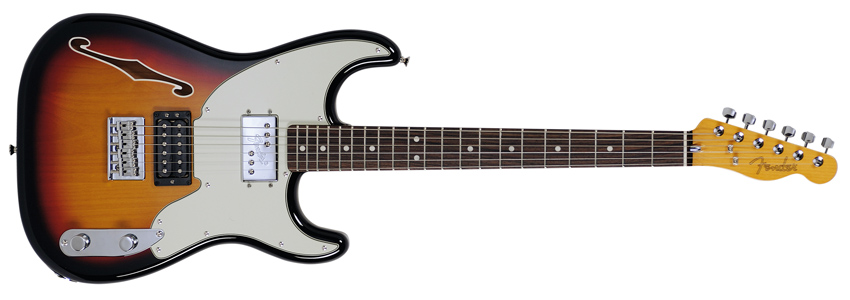
The '51's three-way pickup switch is the reverse of a tone control: fully clockwise voices the neck pickup; same goes for the pickup blend pot on the '72. The coil-split on the '51 voices the outer, bridge-facing coil for the brightest setting - on the Squier '51, we're informed, it voiced the inner, slightly softer sounding single-coil.
But these Enforcers have four-conductor hook-up cables so with a little knowledge, or a healthy bit of experimentation, you could reverse both the function of the pickup switch/blend control and the '51's coil-split with relative ease.
Both the '51 and '72 feel very familiar seated or strapped on. The Mustang feels like your youngster's guitar: small and a little insubstantial, cramped on the fingerboard, with snappy strings.
After living with it for while, however, it grows on you and unless you're hugely framed it really doesn't look as daft strapped-on as it might seem. It also makes for a very practical recording guitar. Hooked up with a POD and laptop, the compactness is ideal for those of us whose 'studios' are situated in the corner of a room somewhere - frankly, the versatility proves quite staggering.
Hum from the single-coils can be a bit of a problem, however: there's no hum-cancellation on the '51's mixed single-coil setting and on the Mustang Special only the opposite single-coil combination - the bridgefacing single-coil of bridge pickup mixed with neck facing coils of the neck pickup and vice versa - are hum-cancelling.
We selected a '69 Fender Tele and a 2010 Yamaha SG1820 retro-fitted with a DiMarzio Super Distortion (the original high-output ceramic-loaded humbucker) as suitable reference guitars.
After setting up a gigging volume clean sound and a just-on-the-edge-of crunch amp tone with our Tele, plugging in the '51's bridge pickup sounds harder and more strident, obviously rounder in the highs in humbucking mode and with a stronger mid-range.
The coilsplit is more ice-pick-like and frankly both sounded better with some volume reduction, which rounds off the highs and reduces the clout hitting your amp. The neck pickup is tonally well balanced, that offset position giving a little more edge for clarity.
The big difference is switching to the slightly crunchy amplifier channel: the '51's Enforcer pushes it into a much more gained sound than our Tele - that's no problem at all, and it's certainly a fun, usable tone that is bright-edged and solid. Again the bridge coil-split sounds rather sharp-edged, but mixes well with the neck for a bright Tele-like parallel tone.
The Mustang has less tonal width: a tighter bass-end and less high-end. Otherwise, the bridge 'bucker is pretty similar, though that narrower focus produces a slightly more classic tonality to our ears.
The outer bridge single-coil is still sharp, but the inner-coil is nicely sweet. The neck 'bucker is, er, big sounding! Rather too big for cleaner tones but both coilsplits are great and experimenting with the variations and mixes produces the most Fender-like tonalities of the trio.
There are some great sounds here and the more conventional controls and sensible switch positions make it very intuitive.
The '72 sounds darker than the '51, almost too dark, like we had a tone control knocked back but, of course, there isn't one. That said it creates the smokiest flavour of the trio, especially the neck humbucker, which for more classic styles sounds less woofy than the Mustang's Enforcer version.
It's more characterful and, on this platform, surprisingly bluesy and jazzy - a great sound. It's less big sounding than our Yammy SG, of course, but of the trio it has probably the least 'Fendery' sound, devoid of single-coil snap and twang. As we up the gain, though, things get nicely messy in a very metal way.
All three's bridge 'buckers deliver three shades of high-octane rock, which more than reiterates how much the construction/wood plays a part in the sound of an electric guitar.
The '51 is big hair metal with a wonderfully trashing high-end sizzle; the Mustang is punkier with more mid-focus, and the '72 a bit thicker, more Gibbo-like. Beware though, that all three are lively, resonant drives and a little microphonic. The '72's neck bucker squeals indicating insufficient potting, and if you go from single-coil to 'bucker on the '51, the microphonic 'clonk' is ear-shatteringly explosive.
These are a trio of interesting guitars and quite a lot to consider if you're in the market. On the negative side we have limited controls and a squealing neck pickup ('72), diminutive size and short scale (Mustang) and absence of tone controls ('51 and '72).
With the exception of the '51's neck single-coil and the '72's Wide Range humbucker the guitars have ultra-high output pickups, which seem at odds with the instruments' retro sixties and seventies designs, and will have the Tone Police tut-tuting. Ceramic magnets and 24k DC ohms resistance indeed!
But, hopefully, that's the point. These guitars are so wrong they're (almost) right. The '51 is a vastly improved Fender version of the original Squier model, a real mash-up of influences that, had it actually been introduced in 1951 and not 2005, could have changed the course of the electric guitar.
The '72 is CBS-ised, but in a good way and, purposefully or not, it does reflect Fender's desire during the seventies to chase the Gibson sound. It certainly does.
Then there's the runt of the litter - the rarely popular Mustang - in this Special format it's exactly that: hugely versatile, the most Fender sounding of the bunch. Yet we doubt that the Mustang will be the big seller, the '51 is, we'd wager, going to be the most popular even though we'd love that threebolt rosewood 'board neck from the '72 on ours with one of those Enforcer Wide Range 'buckers and its coil selector switch… or maybe two of 'em. Or maybe just a more classic 'bucker at the bridge.
Above all, these are well-made, well-priced and interesting pieces. Maybe they're too expensive to be impulse purchases - like many retro-style brands, Danelectro, for example, although aggressive street pricing will see them cost considerably less - and maybe they're simply not essential enough for these cash-strapped times. But that said, you should still get out and try them. Like us you might be very surprised.
Dave Burrluck is one of the world’s most experienced guitar journalists, who started writing back in the '80s for International Musician and Recording World, co-founded The Guitar Magazine and has been the Gear Reviews Editor of Guitarist magazine for the past two decades. Along the way, Dave has been the sole author of The PRS Guitar Book and The Player's Guide to Guitar Maintenance as well as contributing to numerous other books on the electric guitar. Dave is an active gigging and recording musician and still finds time to make, repair and mod guitars, not least for Guitarist’s The Mod Squad.
